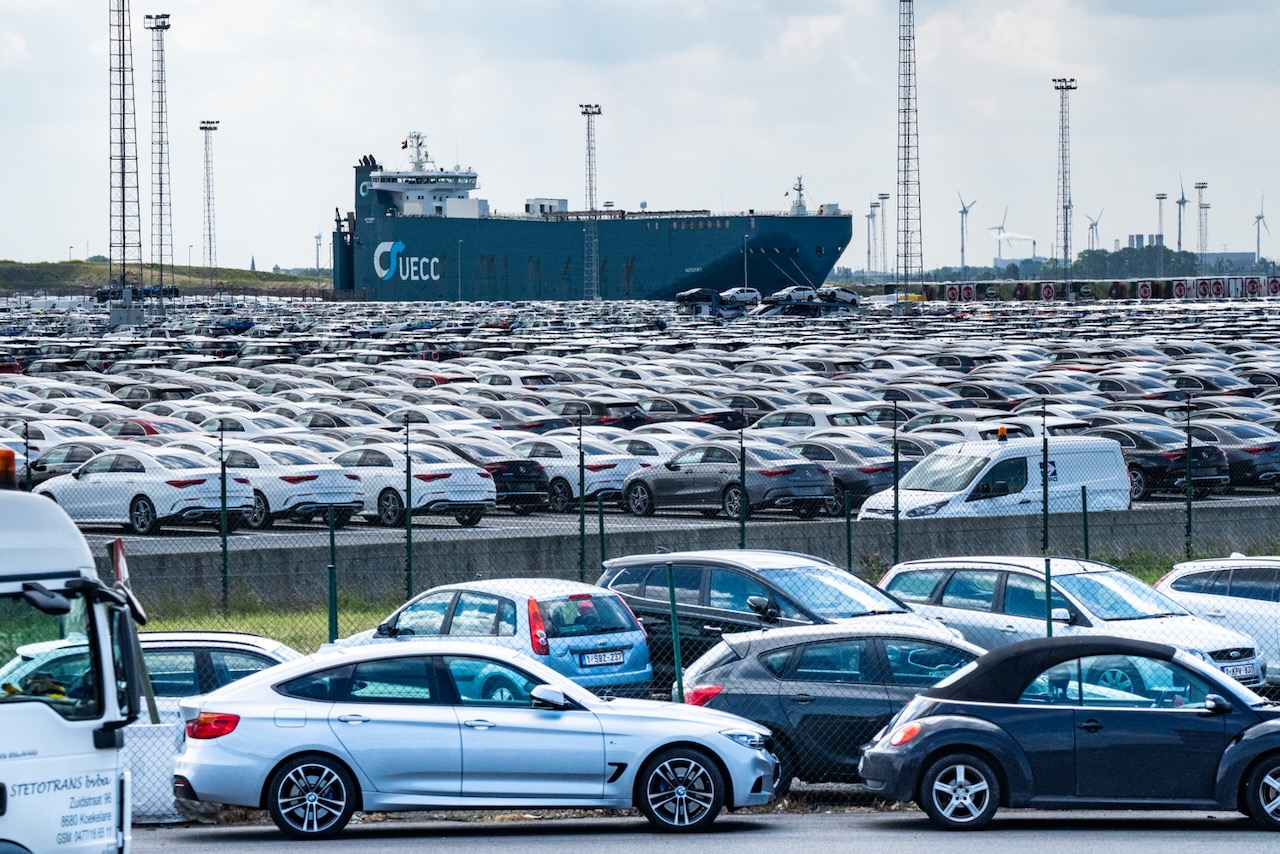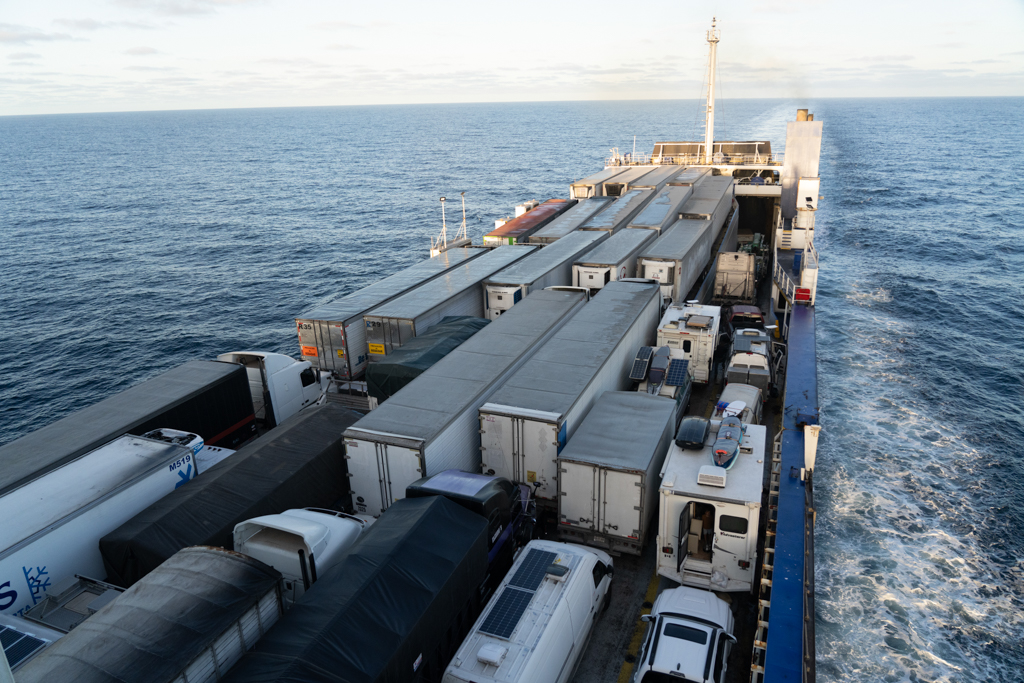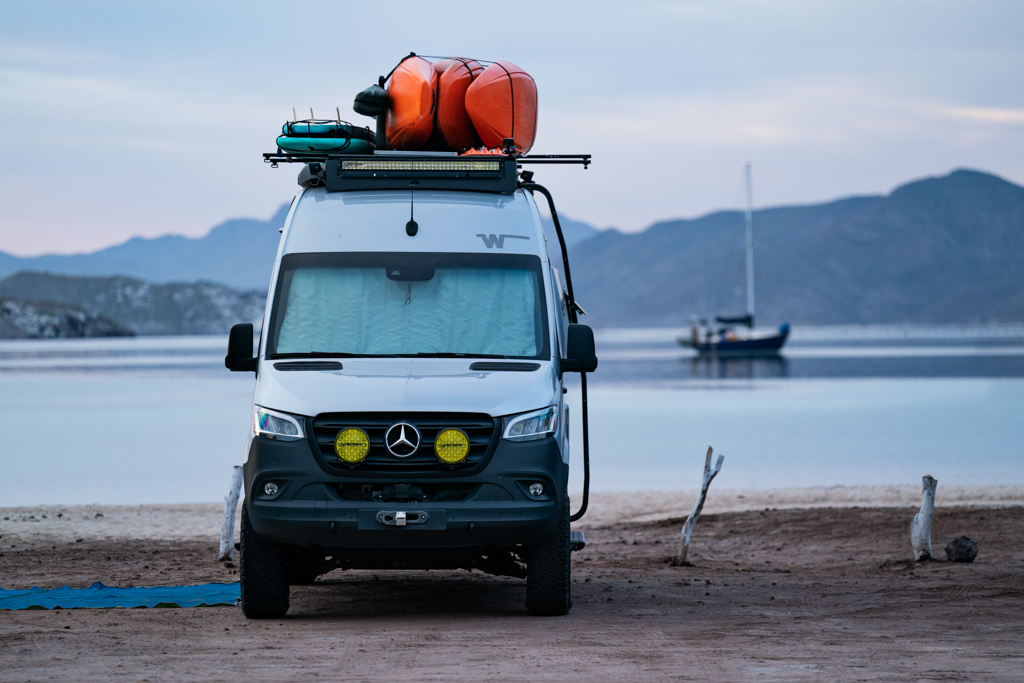Overland travelers have always pushed the limits of vehicle travel, and in many instances, their hunger for exploration has included shipping expedition vehicles to the far reaches of the globe. Unfortunately, over the past year, there have been numerous fires aboard transport ships, and two vehicle carriers were lost at sea due to fires aboard that are thought to be caused by lithium batteries. The crews sustained injuries, at least one life was lost, and thousands of vehicles perished when the ships went down. The financial losses were immense, and the backlash of those accidents is that many of the shipping companies that transport private vehicles overseas have reacted by either imposing strict restrictions on the transport of lithium batteries for international vehicle shipping or, in many instances, are reluctant to transport private vehicles at all.

Combined with the remaining backlog of shipping from the pandemic, this has resulted in a situation where shipping a private vehicle has become a lot more complicated and expensive, leaving many overland travelers, particularly with larger vehicles and expansive battery arrays, with an expensive and logistically difficult conundrum as they attempt to move vehicles around the world. Here is what you need to know as you navigate the logistics of shipping a vehicle with lithium batteries aboard.
Three Methods of Shipping
There are three primary methods by which you can ship a vehicle, and your route and vehicle size will likely play a large role in determining which method will work best for you. For the sake of comparison, I have included an estimated cost for temporary import/export for the various options based on a commonly sized vehicle with the following dimensions: 6 x 2.3 x 2.5 meters (CBM = 34.5) with a total weight of 7,500 pounds (3,400 kilograms). The quotes were obtained from IVSS in August 2024 for transport from Panama to Colombia. Measurements are given in standard l x w x h.

Roll-on/Roll-off (RORO)
A RORO ship is essentially a giant, floating parking garage that transports vehicles around the world. It is how new cars are shipped from where they are manufactured to where they are sold. Vehicles are driven on and off the ship and are stored safely inside the hold during transport. RORO transport is typically more reliable and often faster than container shipping, and vehicles are less likely to be damaged during transport. There is no limitation on vehicle size with RORO transport, and it is, therefore, a great option for large expedition trucks.
Estimated Cost: $4,003 + $1,500 import/export fees

Container
A container is a great shipping option for smaller vehicles. High cube containers come in two lengths: 20 feet (5.9 x 2.34 x 2.28 door height, meters) and 40 feet (12.03m 2.34 x 2.58 door height, meters). The cost of shipping a container is typically more than via RORO, but a 40-foot container will often fit two vehicles (or one vehicle and several motos), thus making a shared container the most cost-effective shipping solution. Since the container is sealed while in transport, this is the most secure method to transport personal items within a vehicle. However, minor damage to the vehicle while in transport is not uncommon.
Estimated Cost for Shared Container: $2,200 + $2,000 import/export fees

Flat Rack
A flat rack is a 40-foot metal platform on which a vehicle can be driven. The vehicle is driven onto the rack and hoisted onto a container ship, leaving it exposed to the elements while in transit. Minor damage during loading is common, and if the vehicle is held for inspection, exorbitant storage fees can add up very quickly.
Estimated Cost: $5,815 + $2,000 import/export fees
Insurance
Marine Cargo Insurance is optional (but recommended) when shipping a vehicle. It starts at $210 for vehicles valued up to $25,000 and ranges up to 0.55% of the vehicle’s value for those worth over $50,000. There is a new insurance option coming soon that will allow overlanders to purchase additional insurance to cover the personal contents of their vehicle (up to $15,000) while in transit.

Lithium Battery Regulations
The recent restrictions on lithium batteries aboard vehicle carrier ships have left overlanders scrambling for solutions. Each of the different shipping methods has different regulations for the transport of lithium batteries, and the rules are adapting as new problems and solutions present themselves. Here is a breakdown of the current regulations.
For RORO transport, each carrier imposes different rules. Some carriers have completely restricted the transport of all types of lithium batteries, while others will accept certain battery types in good condition on a case-by-case basis as hazardous cargo. The best option is to discuss your personal situation with a licensed freight forwarder who can work directly with the carrier to address your individual needs.

When we shipped our Winnebago Revel via RORO around the Darién Gap in June of 2024, our freight forwarder IVSS was able to secure transport for our five LiFePO4 batteries in a separate container that was transporting two other vehicles via the same route at a cost of $300/battery. Overland Embassy quoted us the same amount to coordinate the transport of our batteries via a shared container. Fortunately, we did a little research and discovered that we could take a sailboat tour from Panama to Cartagena via the San Blas Islands and take our batteries aboard the sailboat with us for a total cost of $1,300, including meals and accommodation for five days. This proved less expensive than shipping the batteries via container, saved us the cost of flights and hotels while our van was in transit, and allowed us to spend a glorious five days exploring the San Blas Islands. Win. Win! WIN!! As of August 2024, the company that we used to book the sailboat is no longer accepting lithium batteries, but it would certainly be worth reaching out directly to the boat captains who regularly travel that route to ask permission to transport you and your batteries around the Gap.
One of the benefits of shipping via container (if your vehicle fits) is that the lithium battery regulations are much more relaxed. Lithium batteries still need to be declared, and a Materials Safety Data Sheet (MSDS) must be submitted for your specific battery. Typically, a limited number of batteries are allowed in each container. Freight forwarders have recently been coordinating container shipments to accommodate the transport of RORO customers’ batteries. The primary disadvantage to this solution is that it is expensive, and the shipping dates do not always align. Oftentimes, travelers are forced to wait for a week or more for their batteries to arrive.

Another service now being offered is a Facebook group called Lithium Battery Exchange. It serves as a connection point to “trade” batteries in select locations (Uraguay, Panama, and Colombia). Overland travelers can leave their lithium batteries with an agent near the port and then collect someone else’s batteries in the destination port. The batteries can either be donated or posted for sale. This is a new group with a limited number of members but it could serve as a connection point for travelers looking for an alternative to the expense of shipping their batteries as hazardous cargo.

Of particular importance is that there are rumblings along the Pan-American campground of overlanders “smuggling” lithium batteries in their vehicle aboard a RORO ship by removing the labels and trying to pass them off as lead acid batteries, or by stashing them in an inconspicuous hiding place. Not only is this highly unethical and illegal, it also poses a serious risk for the ship’s crew. The penalty is serious, with a $50,000 fine if you are caught transporting undeclared hazardous cargo. Beyond that, it also jeopardizes the future of RORO transport of private vehicles. The shipment of private vehicles is such a small segment of the RORO shipping industry. If travelers continue to ignore the rules surrounding the transport of lithium batteries, the shipping companies could decide that the risk of transporting private vehicles is not worth the financial gain.
While I wish I could offer up hope that shipping prices will return to pre-pandemic lows and that shipping companies will repeal the lithium battery regulations, this is simply not a realistic expectation. However, it is not all bad news for international vehicle transport. The supply chain for container shipping has finally caught up with demand, and carriers have been more willing to negotiate rates in recent months, driving the overall price of shipping down. We can only hope that RORO pricing will follow suit. As for the transport of lithium batteries, it is an emerging issue, and the regulations will likely go through several iterations before a stable solution takes hold. In the meantime, it is up to all of us to be respectful ambassadors of our overland community. We need to play by the rules so that we can continue to enjoy the privilege of transporting our vehicles abroad and exploring the far reaches of the globe.

Read more: The Principles of Overlanding :: Insights on Exploring the World by Vehicle
Our No Compromise Clause: We do not accept advertorial content or allow advertising to influence our coverage, and our contributors are guaranteed editorial independence. Overland International may earn a small commission from affiliate links included in this article. We appreciate your support.


